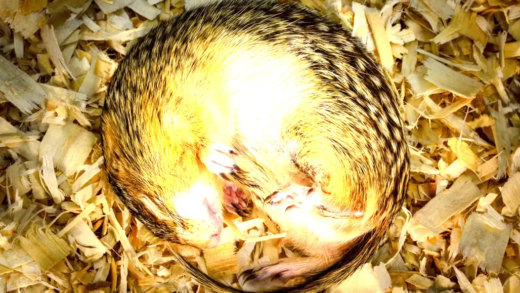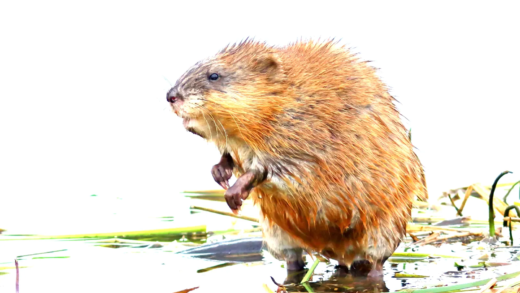Perching birds, or passerines, are a diverse group known for their unique foot structure, melodious songs, and adaptability across various habitats. They play crucial roles in ecosystems, from pollination to seed dispersal. With over 5,000 species, these birds demonstrate a wide range of nesting habits and communication methods. Interesting facts about specific species further illustrate their ecological significance.
What Are Perching Birds?
Perching birds, also known as passerines, are a diverse group of birds that are characterized by their unique foot structure. These birds typically have three toes pointing forward and one toe pointing backward, which allows them to grip branches and other surfaces securely. This adaptation is essential for their lifestyle, as they spend much of their time perched in trees and shrubs. Examples of perching birds include sparrows, finches, and warblers.
Their diet is varied, ranging from seeds and fruits to insects and small animals, depending on the species. These birds are found worldwide, inhabiting various ecosystems, including forests, grasslands, and urban areas. Their ability to adapt to different environments is a key factor in their widespread presence.
In summary, perching birds are defined by their distinctive foot structure and adaptability, making them a vital part of many ecosystems.
Why Are They Called Songbirds?
Perching birds are often referred to as songbirds due to their melodious vocalizations. These birds are known for their complex songs, which serve multiple purposes. Male songbirds typically sing to attract mates and establish territory. Their songs can vary significantly, not just between species but also among individual birds, often reflecting their health and vitality.
The vocalizations of perching birds can be incredibly diverse, ranging from sweet melodies to harsh calls. Some species, like the common nightingale, are renowned for their beautiful songs, while others may have more functional, utilitarian calls. The ability to produce such a wide range of sounds is linked to their sophisticated vocal organs, known as the syrinx.
Thus, the term “songbirds” emphasizes the importance of vocalization in the lives of perching birds, highlighting their role in communication and mating rituals.
Species of Perching Birds
There are over 5,000 species of perching birds worldwide, making them the largest order of birds, known as Passeriformes. This vast group includes a wide range of birds, from the tiny hummingbirds to larger species like crows and jays. Some of the most well-known families within this order include:
- Fringillidae: Finches and allies.
- Emberizidae: Sparrows and buntings.
- Turdidae: Thrushes and allies.
- Corvidae: Crows, ravens, and jays.
The diversity of species allows perching birds to occupy various ecological niches. Each species has adapted uniquely to its environment, exhibiting distinct behaviors, feeding habits, and nesting patterns. This incredible variety not only contributes to the richness of our ecosystems but also offers birdwatchers and nature enthusiasts endless opportunities for exploration and discovery.
In conclusion, the vast number of perching bird species illustrates their ecological importance and the need for conservation efforts to protect their habitats.
Main Characteristics of Perching Birds
Perching birds, or passerines, exhibit several key characteristics that define this fascinating group. Firstly, their unique foot structure is crucial; with three toes facing forward and one backward, they can grip branches effectively. This adaptation not only aids in perching but also allows for agile movements among foliage.
Secondly, perching birds are known for their varied plumage. They can display bright colors or muted tones, depending on their habitat and lifestyle. For example, the vibrant colors of a goldfinch are used to attract mates, while more subdued tones in sparrows help them blend into their surroundings, providing camouflage from predators.
Additionally, these birds possess a highly developed vocal organ called the syrinx, enabling them to produce a wide range of sounds. Their songs and calls are not just for communication; they play vital roles in territory establishment and mate attraction.
In summary, the main characteristics of perching birds include their specialized foot structure, diverse plumage, and complex vocal abilities, all contributing to their adaptability and ecological success.
Where to Find Perching Birds
Perching birds inhabit diverse environments across the globe. From dense forests to open grasslands, these birds adapt to various ecosystems, showcasing their versatility. Some common habitats include:
- Forests: Many species thrive in wooded areas, where they find ample perches and food sources.
- Grasslands: Open fields provide nesting sites and a rich supply of insects and seeds.
- Urban Areas: Surprisingly, many perching birds, like house sparrows and starlings, have adapted well to city life, utilizing buildings and parks.
- Wetlands: Areas near water bodies attract species like warblers, which rely on the dense vegetation for shelter.
Whether you’re birdwatching in a local park or exploring a national forest, perching birds are likely to be present. Their adaptability to different habitats makes them a common sight for nature enthusiasts and casual observers alike.
What Do Perching Birds Eat?
Perching birds have varied diets, which often reflect their habitat and available food sources. Typically, their diet includes:
- Seeds: Many species, like finches and sparrows, primarily consume seeds from plants and grasses.
- Fruits: Berries and fruits are favorite treats for many passerines, providing essential nutrients and energy.
- Insects: During breeding season, many perching birds increase their intake of insects, which are rich in protein and crucial for feeding their young.
- Small Animals: Some species, particularly larger ones like jays, may also hunt small mammals or amphibians.
This dietary flexibility allows perching birds to thrive in various environments. Their feeding habits play an essential role in the ecosystem, helping with seed dispersal and controlling insect populations.
How Do Perching Birds Communicate?
Perching birds, or songbirds, communicate using a fascinating array of vocalizations and body language. Their vocal abilities are primarily due to the syrinx, which is a unique vocal organ located at the base of their trachea. This allows them to produce a wide variety of sounds, from melodious songs to sharp alarm calls. Vocalizations serve many functions, including attracting mates, defending territory, and signaling danger.
There are several types of calls that perching birds use:
- Song: A complex series of notes, often used by males during mating season.
- Alarm Calls: Short, sharp sounds indicating the presence of predators.
- Contact Calls: Simple sounds used to maintain communication between mates or flock members.
Interestingly, many perching birds can mimic sounds from their environment, including the calls of other birds, human-made noises, and even musical tunes. This mimicry not only showcases their intelligence but can also play a role in social interactions within their species.
Nesting Habits of Perching Birds
Perching birds display a remarkable variety of nesting habits, which are often adapted to their specific environments. Generally, these birds build nests in trees, shrubs, or even on the ground, depending on their species and habitat.
Here are some common nesting behaviors:
- Materials Used: Many perching birds use twigs, leaves, grass, and mud to construct their nests. Some species, like the American robin, even incorporate man-made materials.
- Nesting Locations: Nests can be found in diverse locations, including:
- In tree branches
- On ledges of buildings
- In dense shrubs
- Incubation: After laying eggs, the female typically incubates them for about 10 to 14 days. Both parents may take turns caring for the young after they hatch.
This nurturing behavior is critical for the survival of their offspring, as fledglings rely on their parents for food and protection during their early days.
Importance of Perching Birds in Ecosystems
Perching birds play a vital role in maintaining healthy ecosystems. Their diverse diets and behaviors contribute to various ecological functions:
- Pollination: Some perching birds, like certain species of hummingbirds, are important pollinators, assisting in the reproduction of many flowering plants.
- Seed Dispersal: As they feed on fruits and seeds, these birds help disperse plant species across their habitats, promoting biodiversity.
- Insect Control: Many perching birds consume large quantities of insects, helping to keep pest populations in check, which benefits agricultural practices.
In summary, the presence of perching birds enhances the ecological balance, making them essential for the health of their environments.
Interesting Facts About Specific Types
Perching birds exhibit a wealth of fascinating traits and behaviors. Here are some intriguing facts about a few notable species:
- Common Nightingale: Renowned for its powerful and beautiful song, the nightingale’s vocal prowess has inspired poets and musicians for centuries.
- American Robin: This familiar bird is known for its bright orange belly and is often considered a harbinger of spring in North America.
- House Sparrow: These adaptable birds thrive in urban environments and are often found in gardens, parks, and even on busy streets.
- European Goldfinch: Known for its striking yellow and black plumage, the goldfinch can be seen flitting among thistles and sunflowers.
These captivating facts highlight the diversity and adaptability of perching birds, showcasing their importance in both natural and human-altered environments.





Comments are closed.